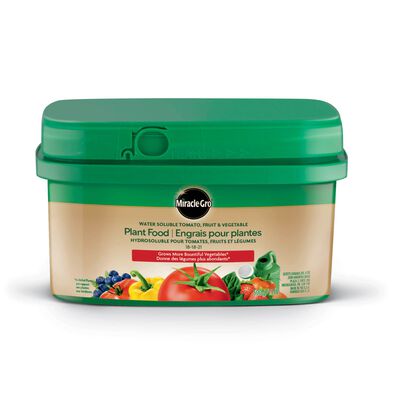
Container Vegetable Gardening For Beginners
Get started growing vegetables with a container vegetable garden. The beauty of such a garden is that it can be located almost anywhere, from a patio to a rooftop. Container gardening with vegetables allows you to skip most soil-borne diseases while you create the ideal growing environment in a pot. A container vegetable garden also puts the harvest within easy reach, keeping fresh flavours at hand. To give your container garden a strong start, skip the seeds and plant vigorous young vegetable plants from Bonnie Plants®.
Choose the Right Size Pot
The first step in growing vegetables in pots is choosing the right container size. The ideal size depends on the type of vegetable you are growing. With plants like bush beans or leaf lettuce, for example, you can get by with a relatively small (10-inch) pot, while an eggplant or bush-type tomato needs a larger (18-inch) pot. Follow these guidelines.
(Numbers in parentheses refer to the number of plants you want to end up with in the pot, whether you plant seeds or seedlings.)
Plant a 10-inch pot with:
leaf lettuce (1)
Swiss chard (1)
bush beans (1)
French (round) carrots (11 to 12)
turnips (4)
Plant a 14-inch pot with:
dwarf sweet corn (6 to 7)
cabbage (1)
collards (1)
carrots (9 to 10)
edamame (2)
peas (4)
leaf lettuce (3 to 4)
spinach (3 to 4)
arugula (3)
Plant an 18-inch (or larger) pot with:
pole beans on trellis (3 to 6, depending on trellis type)
broccoli (1)
cauliflower (1)
eggplant (1)
pepper (1)
determinate tomato and support (1)
any kind of green, leafy vegetables (varies; see plant tag or seed packet for spacing guidelines)
Plant a 24-inch (or larger) pot with:
indeterminate tomato and cage (1)
cucumber (1)
summer squash (1)
artichoke (1)
No matter what size pot you use for growing vegetables, it must have drainage holes to allow excess water to drain away. Otherwise, your plants will most likely drown from overwatering.
Use Premium Potting Soil
To grow a successful container vegetable garden, start with great soil—not soil from your yard, but what's known as a potting mix. These mixes, like Miracle-Gro® Potting Soil, contain the right blend of materials like coir, peat moss and/or compost to create an ideal growing environment for roots inside a pot. Potting mixes don't compact, but instead provide good drainage and air flow. Another great option is Miracle-Gro® Moisture Control Potting Mix, which helps protect plants against over- and under-watering.
Pick a Sunny Spot
Place your container vegetable garden in a spot that receives at least six hours of sun daily, wherever that may be (know that pots placed on pavement, though, tend to heat up and need extra water.) Growing vegetables in pots allows you to fudge the growing season by placing pots in an area with a micro-climate. For instance, lining pots along a south-facing wall in early spring warms soil quickly so you can plant sooner. In autumn, a south- or west-facing wall retains heat and can help extend the growing season as frost threatens.
Don't Forget to Water
Pots dry out much faster than in-ground gardens, which is why container gardening success hinges largely on watering. As vegetables grow and roots fill the soil, plants need more water to stay healthy and yield a harvest. You'll want to check soil daily, and water whenever the top inch becomes dry. Another option is to install a drip irrigation system (sold in simple-to-assemble kits online and at home improvement stores) that will do the watering work for you.
Feed Those Plants!
Vegetables like tomatoes and peppers are heavy feeders, and even less ravenous crops like lettuce and radishes need to eat. In fact, plant food works in tandem with great soil to provide your veggies with just the right amount and type of nutrition throughout the growing season. About a month after planting, begin feeding regularly with Miracle-Gro Water Soluble Tomato, Fruit and Vegetable Plant Food, following label directions. This is a super-convenient way to fertilize, since you can do it while you water the garden—big time-saver! Plus, when you use a combo of this plant food and Miracle-Gro® soil, you'll be rewarded with a bigger harvest (vs. unfed plants).
